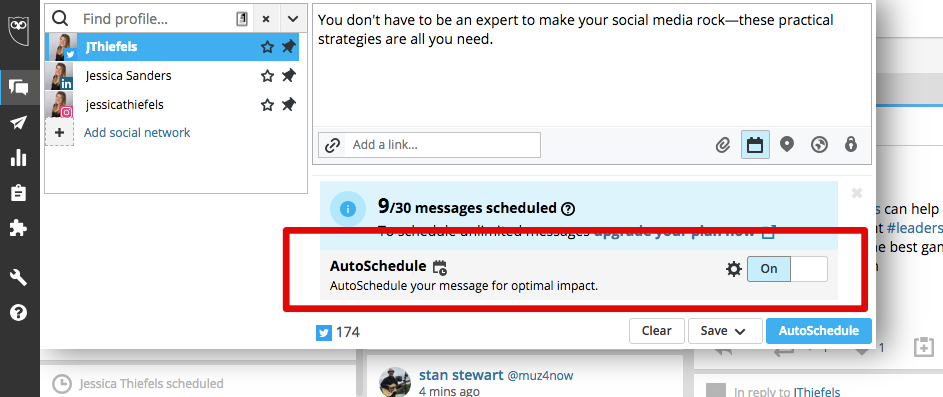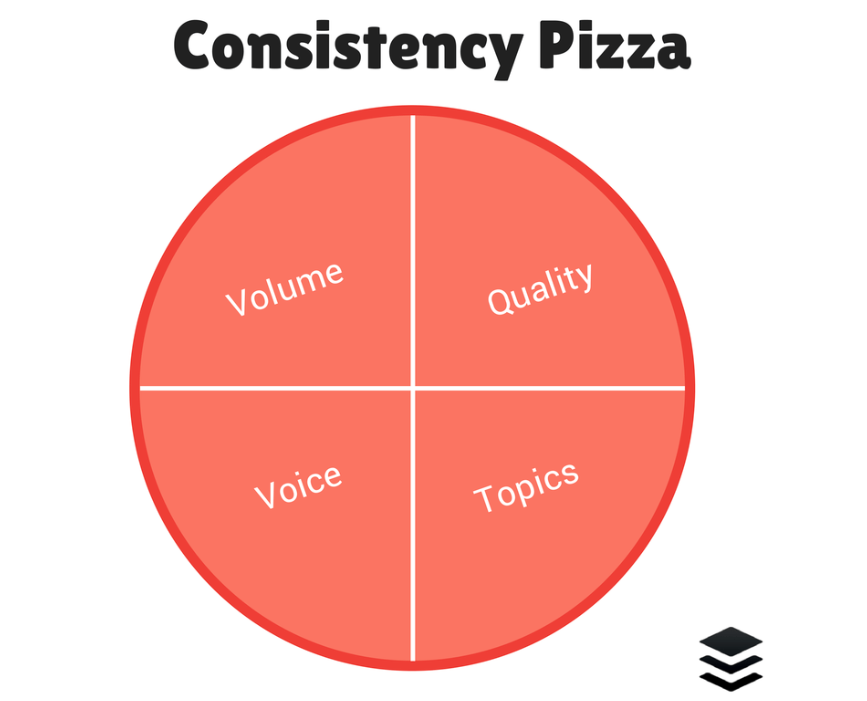Having the right social media strategies in place is as valuable for your small business as it is for a large corporation. If you’re skimping on your efforts, you’re not going to see results. As a small business with a budget to match, you have to make the most of your efforts. And no, that doesn’t mean you have to put money behind ads.
I like to share my expertise on Quora (Follow me!) and there are always a lot of questions about finding affordable online strategies to get more from time spent with social. While I recently shared about how I make time for social media, it’s clear that many business owners simply don’t know how to reap the benefits of these free tools. That’s okay, this doesn’t come naturally to any of us, which is why I’m here to help you.
Use these practical social media strategies to get more value from your efforts.
#1. Get the Timing Right
Posting at the right times is one of the most important factors for a successful social media strategy, even if you don’t have one that’s formalized. In our crowded, online world, it can feel nearly impossible to stand out. If you’re posting when your followers aren’t engaged or active, this goes from feeling impossible to being impossible.
That’s why social media strategy number one is to get your timing right. The best way to do this is by using a social media tool that offers auto-scheduling (Hootsuite is my preferred platform). Instead of simply guessing or posting when you “have a minute,” the scheduler does the work for you. In most cases, these tools use extensive sets of proprietary data to determine the best time to post that day, based on your industry.
All you have to do is load the content into Hootsuite, or your tool of choice, and click “AutoSchedule.”

#2. Use Content Categorizing
This is one of the best social media strategies because everyone always asks: “How do I choose content to share on social media?” There are many factors that will affect this decision, including your goals and what gets your audience to engage. Content categorizing is a great way to bring this all together and make sure you’re fitting everything in. Here’s why:
#1: It helps you hone in on what you’re trying to do with social media. If your goal is to educate, promote, and build your brand, categories might be:
- Educational content: blog posts, guides, informational articles from related sources
- Promotional content: links to products, latest deals and discounts
- Branded content: Client testimonials, behind the scenes, features with other brands
#2: As you schedule your content for the week (I highly recommend doing this to save time), you can use your content categories list as a guide for what to choose. Start at the top of the list and make your way down through each category. Then start again until you’ve filled all your slots for the week. Now, you’re working toward your social media goals and bringing variety into your posting schedule.
#3. Be Consistent With: Volume, Quality, Voice and Topics
Consistency is key if you’re trying to build a following on social media. Consistency in your posting schedule, for example, helps you stay on top of mind with followers. This is important for driving engagement and brand impressions, while consistency in quality, voice and topics is critical for:
- Building trust: Can we trust this person or business’s advice?
- Getting people to come back: Do they always share valuable content?
Bookmark the “Consistency Pizza” if you want help remembering where consistency is needed and why. This can be helpful in the same way content categories are helpful. As you’re creating a social media plan, or even scheduling out for the week, ask yourself: are we being consistent in all four areas?

#4. Engage for 15 Minutes Every Day
There’s one rule to follow when scheduling: Don’t set it and forget it. I don’t know who first came up with this phrasing, but it’s something I learned very early on in my social media marketing career. If you simply post, without engaging, how or why do you expect to engage with you?
This engagement is especially important if you’re trying to drive customers from social media—which all of us, of course, are. “More than ever, users demand brand interactions and if the company doesn’t respond on social, it’s easy to lose customers,” says Alex York, SEO specialist for Sprout Social.
In the midst of interacting with customers, don’t forget to bring your brand and expertise into the conversation. For example, if you’re a local car parts company, you may comment on someone’s post about a problem with their car, saying something like:
“Ah, yes – that happens a lot in the summer because of the heat. ? You just need to do X and X—stop by if you need help, we’re right downtown!”
In this way, you’re providing value—giving them a solution—while reminding the user who you are and what you do.
The issue with engagement for most small businesses (mine included), is that time is limited. “I just don’t have time to scroll my Twitter feed and comment every day.” Quite the contrary‚ everyone has at least 15 minutes each morning. This is the perfect time to engage with your feed, starting conversations, liking great content, and sharing posts. Set your time limit, do what you can, and then go about your day. I even include this on my to-do list each morning so it’s as important as every other task:

I also recommend having the apps for all of your social accounts on your phone. If you get a timely question or comment, you’ll be notified and can respond quickly and easily while waiting in line or standing at a crosswalk.
#5. Understand Your Audience
Your social media strategies will soon start paying off, and that’s where monthly reporting comes in. Use this to learn what each audience likes most to start segmenting what you share. When you look at the data, you’ll start to see patterns, like certain themes getting more engagement on Twitter than Facebook, for example. As you hone in on these details, you can begin sharing content where it will get the most engagement, allowing you to maximize your efforts.
Make It Work With Practical Social Media Strategies
You don’t need a lot of time in your day, or extensive social media management skills, to start getting more from you efforts. Use these practical social media strategies to reach your customers and build your brand. I promise, you’ll still find time for all the other important items on your to-do list.
Still feeling lost?
Let me know what you need help with!



